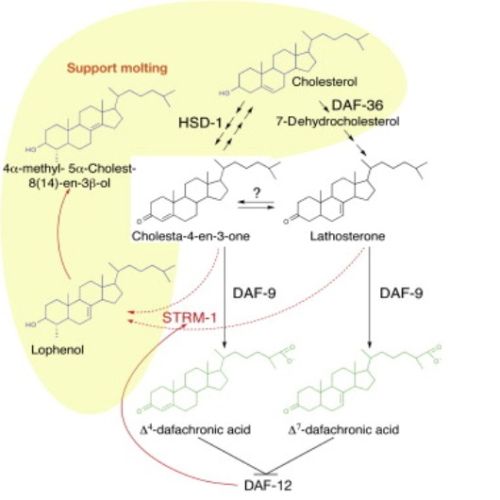Methylation of the sterol nucleus by STRM-1 regulates dauer larva formation in Caenorhabditis elegans.
In response to pheromone(s), Caenorhabditis elegans interrupts its reproductive life cycle and enters diapause as a stress-resistant dauer larva. This decision is governed by a complex system of neuronal and hormonal regulation. All the signals converge onto the nuclear hormone receptor DAF-12. A sterol-derived hormone, dafachronic acid (DA), supports reproductive development by binding to DAF-12 and inhibiting its dauer-promoting activity. Here, we identify a methyltransferase, STRM-1, that modulates DA levels and thus dauer formation. By modifying the substrates that are used for the synthesis of DA, STRM-1 can reduce the amount of hormone produced. Loss of STRM-1 function leads to elevated levels of DA and inefficient dauer formation. Sterol methylation was not previously recognized as a mechanism for regulating hormone activity. Moreover, the C-4 sterol nucleus methylation catalyzed by STRM-1 is unique to nematodes and thus could be a target for therapeutic strategies against parasitic nematode infections.

- Dev. Cell 2009 Jun;16(6):833-43
- 2009
- Developmental Biology
- 19531354
- PubMed
Enabled by:
